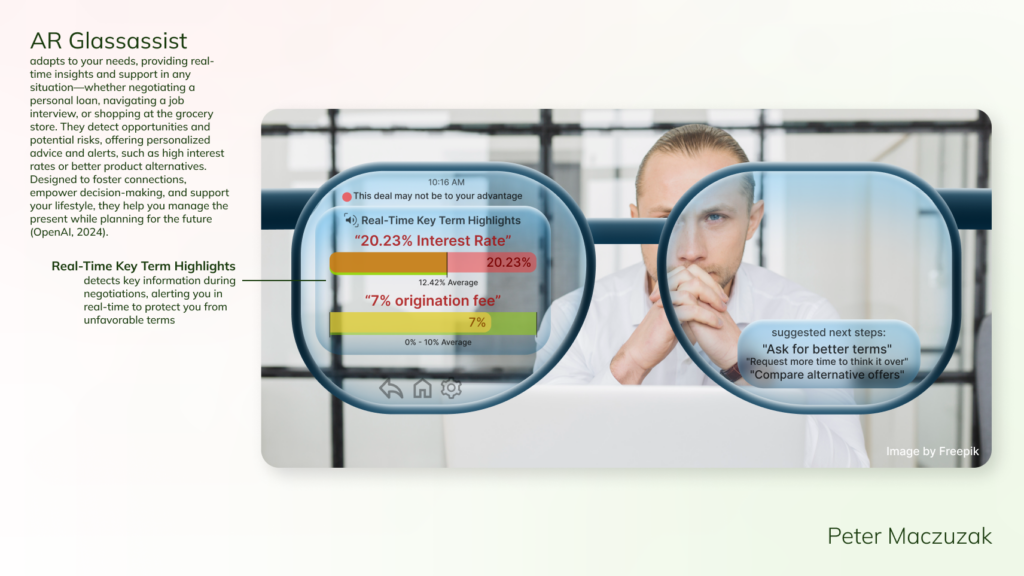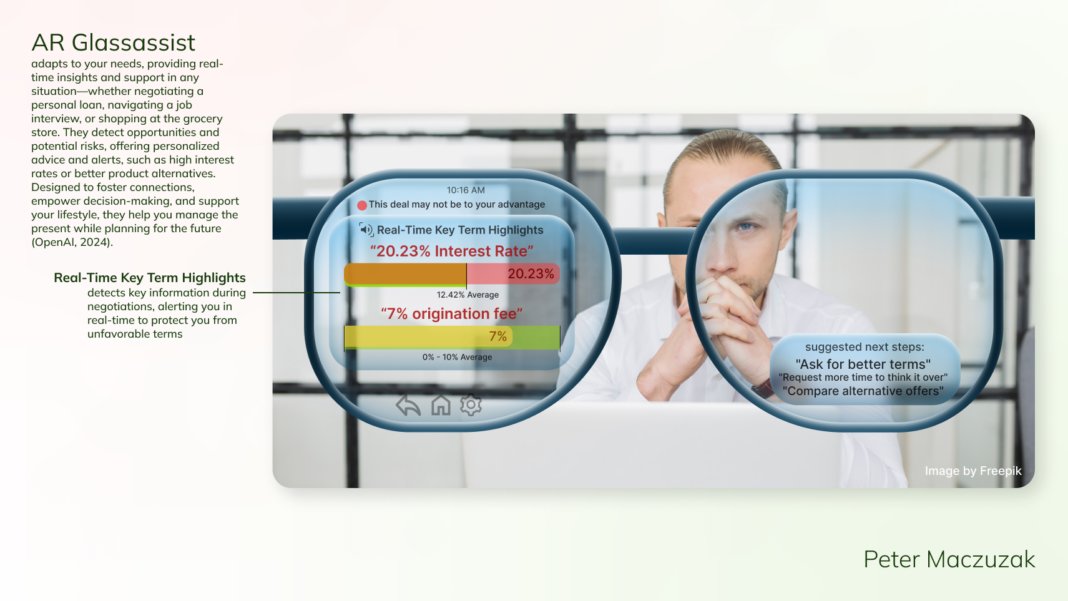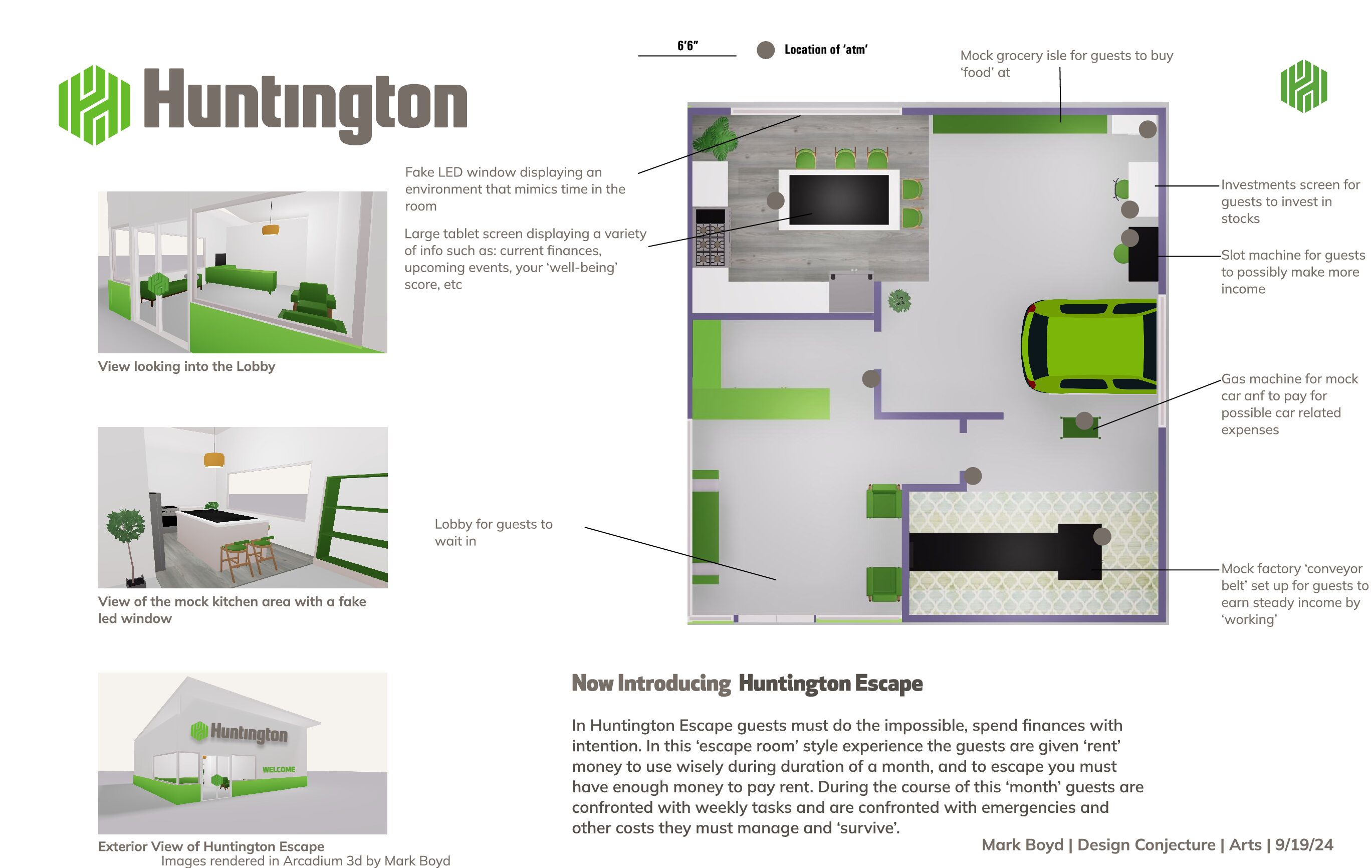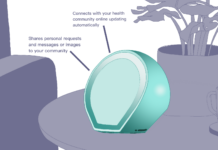With this design conjecture, I tried to balance technology with human connection. Throughout my research, I came across a few articles addressing the ethics of tech integration and concerns for human obsolescence through the “heartless manipulation of man and metals” (Monty, 2019). To address my scope of fostering communities, I thought of how I could potentially utilize technology to instead enhance human interactions, creating engagement with them rather than isolation.

The AR Glassassit analyzes the situation you are in and provides real-time insights to empower users to make informed decisions. This extends to loan negotiations to job interviews, even adjusting to grocery stores to change your shopping experience. In this scenario, the glasses could scan a section of an aisle and visually call out the best options that fit with your lifestyle or diet. It could also assist you in finding items around the store, which makes me question how much human connection will it foster if it also alleviates some of the needs to do so? In regards to wellness, I see these glasses as an opportunity to make users less anxious in the choices they make. If they were originally hesitant to apply for a personal loan because of their lack of knowledge or they feared being taken advantage of, these glasses could be the motivation to take that step and meet with a banker. Then, the glasses could listen in to the conversation and send alerts about high interest rates or hidden fees, leveling the playing field and encouraging further discussions. It would enhance personal agency, rather than following the notion technology will replace human involvement.
For how the glasses would dictate what a situation is and requires, I thought about integrating a base level of uses that come built in, with the possibility to get extra features through subscriptions. After researching people’s perspectives on paying for subscriptions, this seemed to be a logical solution to address both concerns for ownership and functionality.
How much control is given back to the user if they are relying on tech for their future actions? How is the data for a person’s surroundings recorded so that it generates effective information yet is ethically considerate of privacy? How will misinformation or eros in real-time insights be managed or addressed?
References
Monty, S. (2019, March 21). Lessons from The Brain Center at Whipple’s. Timeless Leadership. https://www.timelesstimely.com/p/lessons-from-the-brain-center-at
OpenAI. (2024). ChatGPT (Sept 2024 version) [Large language model]. https://chat.openai.com/chat




